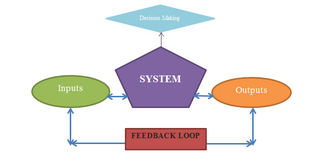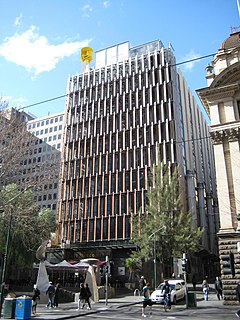
Green building refers to both a structure and the application of processes that are environmentally responsible and resource-efficient throughout a building's life-cycle: from planning to design, construction, operation, maintenance, renovation, and demolition. This requires close cooperation of the contractor, the architects, the engineers, and the client at all project stages. The Green Building practice expands and complements the classical building design concerns of economy, utility, durability, and comfort. In doing so, the three dimensions of sustainability, i.e., planet, people and profit across the entire supply chain need to be considered.

Leadership in Energy and Environmental Design (LEED) is a green building certification program used worldwide. Developed by the non-profit U.S. Green Building Council (USGBC), it includes a set of rating systems for the design, construction, operation, and maintenance of green buildings, homes, and neighborhoods, which aims to help building owners and operators be environmentally responsible and use resources efficiently. By 2015, there were over 80,000 LEED-certified buildings and over 100,000 LEED-accredited professionals. Most LEED-certified buildings are located in major U.S. metropolises. LEED Canada has developed a separate rating system for the regulations and climate of that country.
A House Energy Rating is the index of a building's thermal performance for residential homes in Australia.

Regenerative design is a process-oriented whole systems approach to design. The term "regenerative" describes processes that restore, renew or revitalize their own sources of energy and materials. Regenerative design uses whole systems thinking to create resilient and equitable systems that integrate the needs of society with the integrity of nature.
Green Star is a voluntary sustainability rating system for buildings in Australia. It was launched in 2003 by the Green Building Council of Australia (GBCA).

Council House 2 (also known as CH2), is an office building located at 240 Little Collins Street in the CBD of Melbourne, Australia. It is used by the City of Melbourne council, and in April 2005, became the first purpose-built office building in Australia to achieve a maximum Six Green Star rating, certified by the Green Building Council of Australia. CH2 officially opened in August 2006.
This article provides examples of green building programs in the United States. These programs span the public, private, and non-profit sectors, and all have the goal of increasing energy efficiency and the sustainability of the built environment.

The Bowden development is an urban development in the Australian state of South Australia on a site formerly owned by the Clipsal corporation in the suburb of Bowden, within the City of Charles Sturt, in the Adelaide metropolitan area 2.5 kilometres from the city centre.

Green buildings in Australia are assessed and rated by a variety of government and independent ratings systems.
Green building in South Africa is overseen by The Green Building Council of South Africa which has developed Green Star SA rating tools, based on those developed by the Green Building Council of Australia tools, to provide the property industry with an objective measurement for green buildings and to recognize and reward environmental leadership in the property industry. Each Green Star SA rating tool reflects a different market sector. The first tool developed was Green Star SA - Office which was published in pilot form for public comment in July 2008, with final version 1 release at the Green Building Council of South Africa Convention & Exhibition ’08 on 2–4 November 2008.

The Philippine Green Building Council (PHILGBC) is a national non-stock, non-profit organization that promotes the sharing of knowledge on green practices to the property industry to ensure a sustainable environment. It was organized to serve as a single voice in the promotion of holistic and market-based green building practices, to facilitate the sharing of green building information and practices in the building industry, and to serve as a non-partisan venue for the development of the BERDE Green Building Rating System.
Environmentally sustainable design is the philosophy of designing physical objects, the built environment, and services to comply with the principles of ecological sustainability.
LEED for Neighborhood Development (LEED-ND), where "LEED" stands for Leadership in Energy and Environmental Design, is a United States-based rating system that integrates the principles of smart growth, urbanism, and green building into a national system for neighborhood design. LEED certification provides independent, third-party verification that a development's location and design meet accepted high levels of environmentally responsible, sustainable development.

Coca-Cola Place, originally known as The Ark, is a 21 level commercial office building located at 16-40 Mount St in North Sydney, Australia. It is jointly owned by Investa Property Group and Investa Commercial Property Fund and was designed by the architectural firm Rice Daubney. Major tenants include Coca-Cola Amatil, Coca-Cola South Pacific, Vodafone Hutchison Australia, AWE Limited and Regus.
Bangladesh is one of the most vulnerable nations in the world due to climate change. As the ninth most populous country and twelfth most densely populated countries in the world, its rising population and limited land space have put tremendous strains on the urban ecosystem. The capital of Dhaka itself underwent severe transformations in recent years to catch up the increased rate of urbanisation. This change was paralleled by a boom in the real estate, construction and housing industry. According to United Nations Population Fund (UNFPA), Dhaka is one of the most polluted cities in the world.
Green Building Initiative (GBI) is a 501(c)(3) nonprofit organization that owns and administers the Green Globes green building assessment and certification in the United States and Canada. It was established in 2004 and is headquartered in Portland, Oregon.
GreenCE is an online platform that educates architects, engineers, interior designers, and contractors. The organization is a US Green Building Council (USGBC) Education Partner. The USGBC developed the Leadership in Energy and Environmental Design (LEED) system, the world's most utilized green building rating system. GreenCE is also an American Institute of Architects (AIA) Education Provider. It develops and delivers continuing education via online courses, webinars, and live classroom events. GreenCE is a partner with the Health Product Declaration Collaborative and is one of only seven companies in the world to help develop third party verification tools for the building product declaration. GreenCE is based in San Antonio, TX and has an office in the Portland, OR dedicated to LEED certification education.

One Central Park is a mixed-use dual high-rise building located in the Sydney suburb of Chippendale in New South Wales, Australia. Developed as a joint venture between Frasers Property and Sekisui House, it was constructed as the first stage of the Central Park urban renewal project.

Green building certification systems are a set of rating systems and tools that are used to assess a building or a construction project's performance from a sustainability and environmental perspective. Such ratings aim to improve the overall quality of buildings and infrastructures, integrate a life cycle approach in its design and construction, and promote the fulfillment of the United Nations Sustainable Development Goals by the construction industry. Buildings that have been assessed and are deemed to meet a certain level of performance and quality, receive a certificate proving this achievement.









